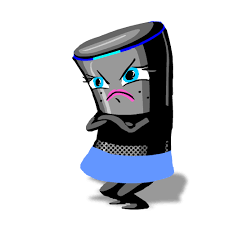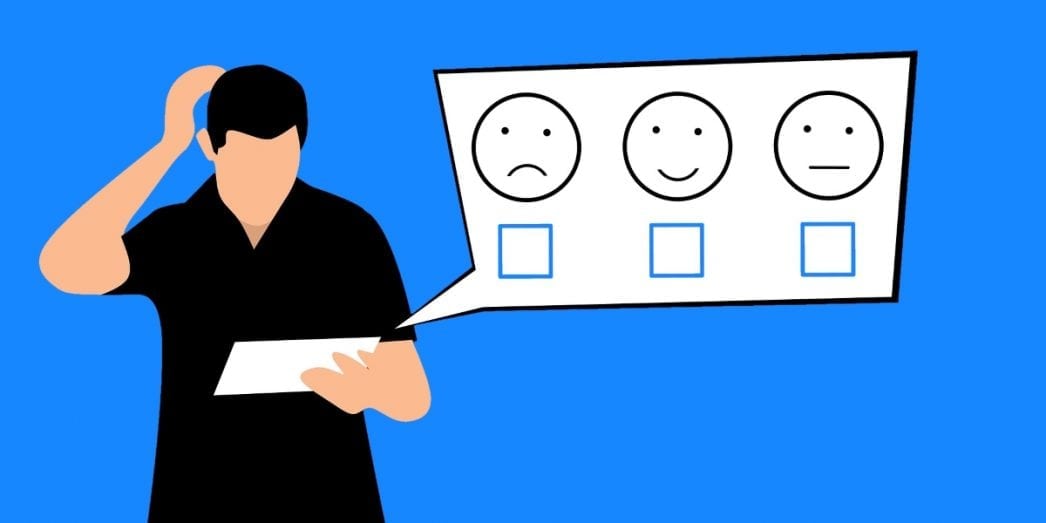“Alexa, the sales assistant was not nice to me today. I regret buying that product even though it’s probably the best thing I have ever bought.”

This situation is so common, it sometimes feels like everybody have a story like this to share.
In this setting there are actually two main problems. Even though in general it seems like the person is just blaming the company… The person is actually commenting on two different parts of the company. Exactly what we call Customer Experience (CX) and User Experience (UX).
In this blog post I will explain my view of the main differences between UX and CX.
The terms can mistakenly be taken as the same or even identical. However, once I started deep dive about both terms I realised that customer experience is a lot older than user experience in terms of usability. This being said I am well aware of the fact that user experience started to get a lot of attention right after the term was released.
CX (Customer Experience)
Customer experience actually tries to make the company understand how the customer feels when using the service or the product provided by the company.
It is not only the product that will make the customer get back to you, but instead the overall experience. The small talk a customer has with the sales assistant, the efficiency of the customer support guy/girl that answers promptly all your questions and deal with your panic attacks.
A quick definition:
Customer experience sums up basically everything that stands between the customer and the company. Furthermore, how a company serves its brand to the customers perception makes the CX create a better or worse perception of the company itself.
That is why the company and whoever works in it is responsible of providing a great experience in order to keep the customer satisfied and making sure of the fact that the perception that the customer has is great and will continue to be the same. However the customer experience is quite fragile and that is why the company has to keep up the good work in a daily basis to make sure everything is going okay, because otherwise, customers change the perception of the brand and switch to another company in a blink of an eye considering how a million other opportunities are being served to the customer today in the market. It’s what we at Ticketbird mean when we say “Customers will love you or leave you”.
There is no time to lose and this is why building a solid customer experience that provides the customer with what she/he needs in a fast and efficient way is definitely the key of a good experience. A great bet is that a happy customer will not only return and become a loyal customer but also, invite his friends. That is why investing on the customer effort is a way to fundamentally increase the experience level.

User Experience (UX)
It is worth emphasizing that UX is closely related to the product or service the company is providing to the market and therefore to the consumer.
On the other hand, user experience seem to be a little more complicated once you start scratching the surface and look for details. Usability, findability, credibility, desirability, accessibility, valuability are the features that make the user experience definition complete.
It is important to know what exactly the new product will bring to the market. There are many cases when the company keeps renovating different features of the product which could improve its design, accessibility etc in order to make the user excited about the new characteristics added to the product. In addition, UX focuses more on how the user will perceive the product or service in terms of what the product stands for instead of what surrounds it. But, is this always relevant for any case? Fortunately, I got your back. This other blog post written by the birds (which is found here) will make you think twice before answering this tricky question.

The difference
I believe that CX is a larger concept that combines everything what UX stands for plus the perception of the experience which turns into a loyal customer in real life scenario. The reason why I think this is way is that, yes I do agree that UX having all this features kind of helps in building the experience and how the brand is perceived by the consumer but still, a customer is not always a user or full time user. A customer can buy the product and could still never see the desirability behind it. On the other hand the user is the one who checks very carefully how everything is going and how it could be improved in the future, is the one giving real feedback to the company.
Customer experience actually tries to make the company understand how the customer feels when using the service or the product provided by the company.
Also, CX stands for the fact that what makes a customer returns. Many companies show throughout their vision or mission that they do not want to sell the product or the service but the experience instead because that is the crucial feature that make a customer return and become a user in the near future. The company aims exactly this, creating the solid bridge that will make the customer satisfied enough to continue using the products.
Full satisfaction in terms of delivering the product or service exactly the same way as advertised etc, makes the customer experience a broader term that validates what the company stands for.
A common thing: Customer touchpoints
A customer journey mapping is important in both cases. Here is how it works.
Well, customer journey mapping is quite a complex term, however it is closely related to the experience, to the user and its surroundings. What the user is trying to achieve, how and most importantly where the user is coming from: the context, provides very important information for the designer when using a tool like customer journey mapping. It is often confused to a snapshot, but on the contrary it is a map which shows the evolution of the customer’s experience and the user’s experience.
As mentioned earlier, journey mapping is important in both cases giving the possibility to the designer to enhance the experience through observing this overview provided by the tool. Moreover, meeting the customer’s needs is fundamental and should be prioritize anytime, that is why every designer working on a map should make sure that everything is clear and easy to understand at first glance. 60% of customer experience professionals are increasing their journey mapping experiences (Follow the heart of the customer to learn more).
Hence, it is quite important to understand how crucial CJM is. It should also be visually appealing and a quick gap identifier.
There are three kind of gaps, all which are addressed by Ticketbird after our user studies:
- gaps between devices when a user moves from one device to another,
- gaps between departments in which the user might get frustrated and
- gaps between channels which focuses on the experience when the user is way more pleased when moved from social media to the website.
As soon as the designer identifies the gaps, it gets easier for him/her to deal with providing a better experience which of course would be converted in high returns.
This blog post was concentrated on UX, CX and CJM; what they stand for, how important they are to the company and what are the next steps that companies should be undertaking in order to succeed in the future.
You better not confuse the terms anymore after reading this and you probably will not complain to Alexa anymore, but instead tell her nice stories. I will come back for more interesting info related to CX and Chatbots. Stay tuned!
Sources
- https://boagworld.com/usability/customer-journey-mapping/
- https://heartofthecustomer.com/wp-content/uploads/2018/03/Journey-Mapping-Best-Practices.pdf
- https://www.sailthru.com/marketing-blog/written-customer-journey-mapping-need-to-know/
- https://conversionxl.com/blog/customer-journey-mapping-examples/#6-customer-journey-mapping-examples
- https://www.interaction-design.org/literature/article/user-experience-and-customer-experience-what-s-the-difference
- https://www.huffingtonpost.com/don-dodds/what-is-customer-experience_b_8936286.html
- https://www.forbes.com/sites/blakemorgan/2017/04/20/what-is-customer-experience-2/#3ad34ace70c2
- https://hbr.org/2010/10/understanding-customer-experie
- https://medium.com/@marcintreder/the-history-of-user-experience-design-5d87d1f81f5a
- https://www.interaction-design.org/literature/article/the-7-factors-that-influence-user-experience


